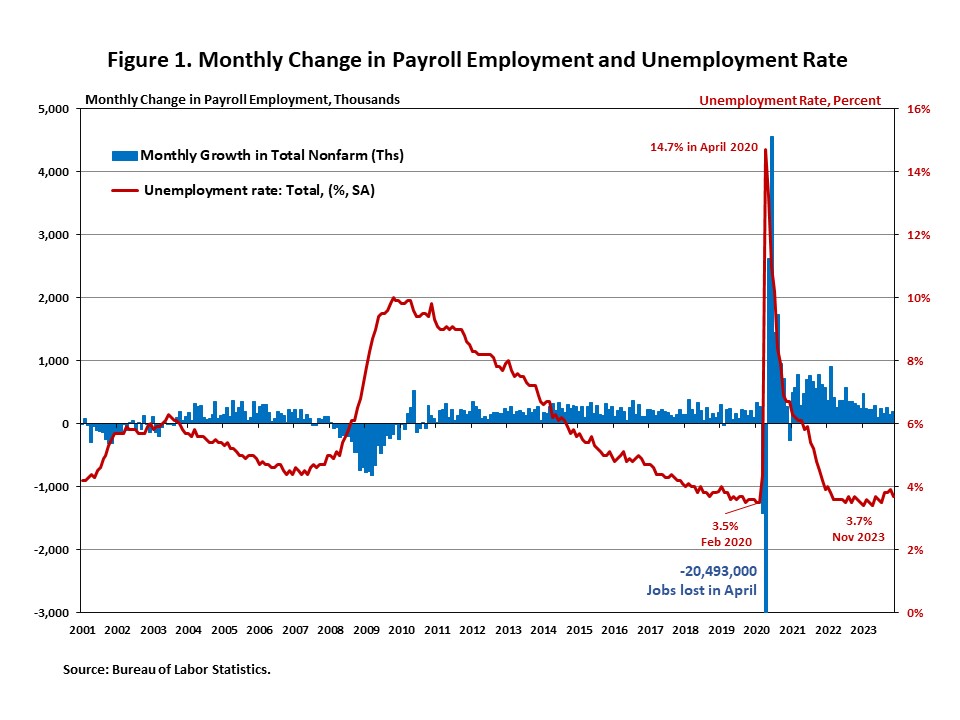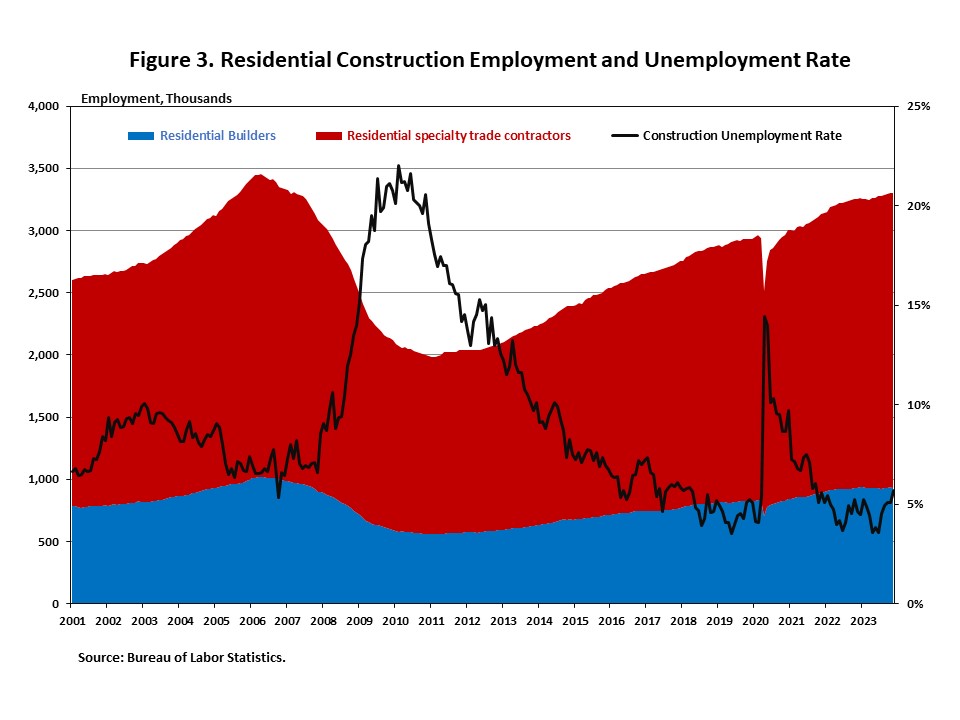In November, total nonfarm payroll employment increased by 199,000 and the unemployment rate declined to 3.7%, from 3.9% in October. The labor market continues to moderate. The Fed held interest rates steady for the second meeting in a row at the conclusion of its November meeting. This month’s employment data will be one of the key components in determining whether to hold the federal funds rate again at its December meeting. Given the cooling data, the bond market has seen a decline in interest rates, with the 10-year Treasury rate falling below 4.2% as of early this week.
Additionally, wage growth continued to slow. In November, wages grew at a 4.0% year-over-year (YOY) growth rate, down 1 percentage point from a year ago. It marks the lowest YOY wage gain since June 2021, suggesting inflationary pressures are easing.

Total nonfarm payroll employment increased by 199,000 in November, following a gain of 150,000 in October, as reported in the Employment Situation Summary. The monthly change in total nonfarm payroll employment for September was revised down by 35,000 from +297,000 to +262,000, while the October estimate remained at +150,000. Combined, the revisions took the original estimates down by 35,000.
Despite restrictive monetary policy, more than 6 million jobs have been created since March 2022, when the Fed enacted the first interest rate hike of this cycle. In the first eleven months of 2023, nearly 2.6 million jobs were created, and monthly employment growth averaged 232,000 per month, less than the average monthly growth of 399,000 in 2022.
The unemployment rate declined to 3.7% in November as the labor force participation rate edged up. The number of unemployed persons decreased by 215,000, while the number of employed persons increased by 747,000.
The labor force participation rate, the proportion of the population either looking for a job or already holding a job, edged up 0.1 percentage point to 62.8% in November, reflecting the increase in the number of persons in the labor force (+736,000) and the decrease in the number of persons not in the labor force (-525,000). Moreover, the labor force participation rate for people who aged between 25 and 54 remained unchanged at 83.3%. While the overall labor force participation rate is still below its pre-pandemic levels at the beginning of 2020, the rate for people who aged between 25 and 54 exceeds the pre-pandemic level of 83.1%.

For industry sectors, employment in health care (+77,000), government (+49,000), and leisure and hospitality (+40,000) increased. Employment in manufacturing increased by 28,000, reflecting an increase of 30,000 in motor vehicles and parts as workers returned from the auto strikes. Employment in retail trade declined.
Employment in the overall construction sector increased by 2,000 in November, following a 25,000 gain in October. While residential construction added 1,000 jobs, non-residential construction employment added 1,400 jobs for the month.
Residential construction employment now stands at 3.3 million in November, broken down as 934,000 builders and 2.4 million residential specialty trade contractors. The 6-month moving average of job gains for residential construction was 6,717 a month. Over the last 12 months, home builders and remodelers added 53,000 jobs on a net basis. Since the low point following the Great Recession, residential construction has gained 1,321,500 positions.
In November, the unemployment rate for construction workers rose 0.6 percentage points to 5.7% on a seasonally adjusted basis. It marks the highest rate since July 2021 and has been trending up in the past five months, after reaching the lowest rate of 3.6% in June 2023.


